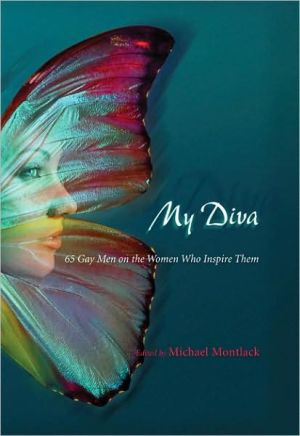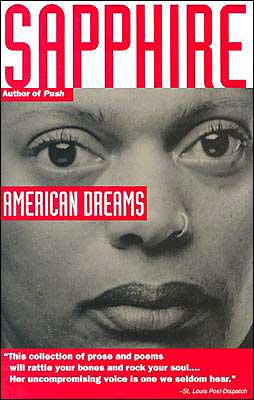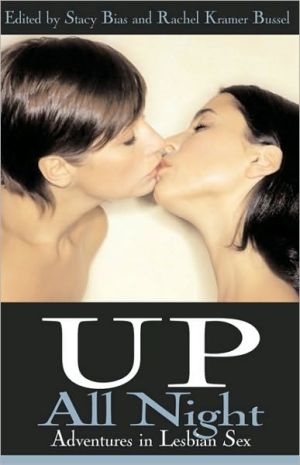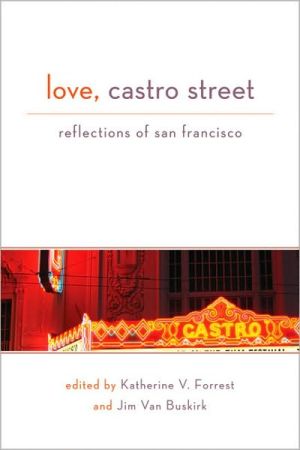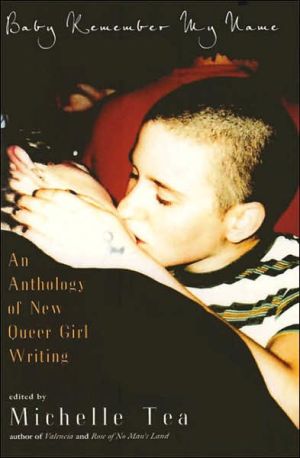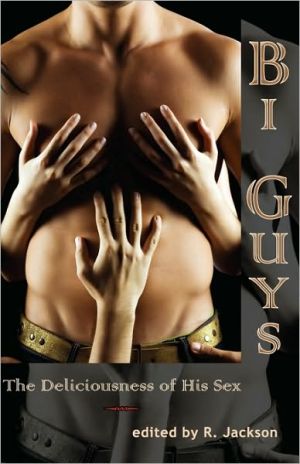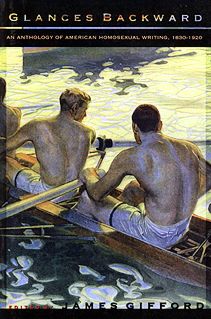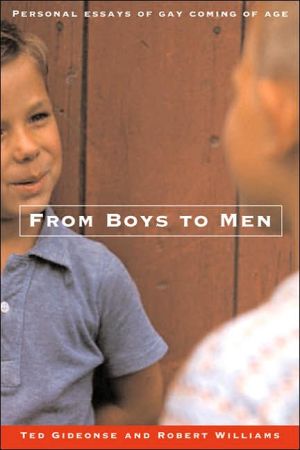My Diva: 65 Gay Men on the Women Who Inspire Them
From Elizabeth Taylor, Bette Midler, and Diana Ross to Queen Elizabeth I, Julia Child, and Princess Leia, these divas have been sister, alter ego, fairy godmother, or model for survival to gay men and the closeted boys they once were. And anyone—straight or gay, young or old, male or female—who ever needed a muse, or found one, will see their own longing mirrored here as well.\ These witty and poignant short essays explore reasons for diva-worship as diverse as the writers...
Search in google:
From Elizabeth Taylor, Bette Midler, and Diana Ross to Queen Elizabeth I, Julia Child, and Princess Leia, these divas have been sister, alter ego, fairy godmother, or model for survival to gay men and the closeted boys they once were. And anyone—straight or gay, young or old, male or female—who ever needed a muse, or found one, will see their own longing mirrored here as well.Publishers WeeklyIn very short, very tender essays, a variety of gay male writers, from poets to playwrights to a standup comic, pay homage to an even wider variety of women who have inspired them. Peter Dubé writes how the photography of Claude Cahun suggested "a delirious world of possibilities"; Jeff Oaks recalls a childhood of wearing wristbands fashioned from paper cups to emulate his "model of power," Wonder Woman; Christopher Lee Nutter looks back on his closeted teenage years and how Sade taught him "that there was a world somewhere that suited them better than the world they'd been born into." While a few essays are disappointingly shallow ("More than smart and fabulous, Parker Posey is fall-on-the-floor ridiculous"), such standout pieces as Mark Doty on Grace Paley are elegant and affectionate tributes to how these muses have been "fairy godmothers" and "older sisters," as Montlack's introduction explains, and illustrate how complex, sustaining and lifelong are the bonds between gay men and their divas. (May)Copyright © Reed Business Information, a division of Reed Elsevier Inc. All rights reserved.
“Part flapper, she could wrap her lovely figure up in her long brown mink or coat of lynx. Her cigarette was always held at bay from the tangerine or pink gloss of her lips by the dark span of a cigarette holder.”—Scott Hightower, on Aurora de Albornoz\ \ “There is something about these larger-than-life stars that represents our yearnings for vindication, in which we see ourselves transcending the difficulties a gay man faces in this world.”—Edward Field, on Gloria Swanson
Introduction—Michael Montlack Sappho (630 BC): Love, I Implore You in Polyester Lapels—Michael Broder Queen Elizabeth I (1533): Heart of a King—Patrick Letellier Virginia Woolf (1882): This Perpetual Revision of Thought—Brian Teare Margaret Dumont (1882): Duchess of Dignity—Christopher Murray Bessie Smith (1892): Empty Bed Blues—Sam J. Miller Claude Cahun (1894): Masks, Makeup, Meaning—Peter Dubé Gracie Allen (1895): Comic Muse—Lloyd Schwartz Lotte Lenya (1898): Divine Weltschmerz—David Bergman Gloria Swanson (1899): Sunset Boulevard—Edward Field Agnes Moorehead (1900): Afternoons as Endora—Richard Blanco Marlene Dietrich (1901): Falling in Love Again—Walter Holland Joan Crawford (1905) and Bette Davis (1908): "But ya AHHH, Blanche!"—David Trinidad Lucille Ball (1911): Flaming Redhead—Lawrence Applebaum Mahalia Jackson (1911): Divine One—Forrest Hamer Julia Child (1912): Life's Ingredients—Bill Fogle Billie Holiday (1915): Lady Day—Alfred Corn Edith Piaf (1915): A Share of Pain—Gregory Woods Evita Perón (1919): Santa with a Soundtrack—Guillermo Castro Grace Paley (1922): O Stone! O Steel!—Mark Doty Ava Gardner (1922): Small Town Girl—Chris Cleo Creech Aurora de Albornoz (1926): Tia Divina—Scott Hightower Joan Sutherland (1926): Dame Joan and I—Gary Ljungquist Eartha Kitt (1927): Purrrfectly Detached—D. A. Powell Betty Berzon (1928): Dinners with the Diminutive Diva—Jim Van Buskirk Jeanne Moreau (1928): Living Dangerously with Jeanne—Collin Kelley Two Fat Ladies (Jennifer Paterson) (1928): Cocktails with Jennifer—Jack Lynch Audrey Hepburn (1929): Adoration and the Icon—Joseph Campana Elizabeth Taylor (1932): The Über-Diva—Scott F. Stoddart Anna Moffo (1932): Her Funeral—Wayne Koestenbaum Ms. Kiki Durane (Depression Era): Her Sound and Fury—Christopher Schmidt Nina Simone (1933): I Got It Bad for Bangles & Diamonds—Regie Cabico Julie Andrews (1935): My First Maria—Mark Wunderlich Tina Turner (1939): Tina & I—Jim Elledge Karen Black (1939): Diva of the Deranged—Michael Schiavi Raquel Welch (1940): As My Mother—Ron Palmer Julie Christie (1941): The Cocteau Girl—Cyrus Cassells Helen Reddy (1941): Before Anarchy—Richard Tayson Wonder Woman (Lynda Carter) (1942): Exploring the Amazon—Jeff Oaks Diana Ross (1944): How to Reign Supreme—Jericho Brown Rocío Dúrcal (1944): The Day She Died—Rigoberto González Bette Midler (1945): First Loves—Steven Cordova Jessye Norman (1945): Als Ob Ich Säuseln Hörte—Dante Micheaux Liza Minnelli (1946): Everybody Loves a Winner: Five Lessons from Liza—Jason Schneiderman Cher (1946): History (1987–2)—Aaron Smith Laura Nyro (1947): All She Asked of Living—Michael Klein Stevie Nicks (1948): "And Wouldn't You Love to Love Her?"—Michael Montlack Jessica Lange (1949): Isn't It a Laugh?—Allen Smith Patti Lupone (1949): Patti's Turn, In the Key of Diva—Jonathan Howle Wendy Waldman (1950): Seeds and Orphans—Paul Lisicky Cyndi Lauper (1953): The Sadness in Her Rasp—Steven Riel Rickie Lee Jones (1954): The Duchess of Coolsville—Timothy Liu Annie Lenox (1954): Desire, Despair, Desire: Some Notes on Annie Lennox & Tension—RJ Gibson Siouxsie Sioux (1957): Black Eyeliner and Dark Dreams—Benjamin Harper Auntie Mame (Rosalind Russell) (1958): "I'm Going to Open Doors for You, Doors You Never Even Dreamed Existed"—Lewis DeSimone Kate Bush (1958): The Invisible Diva—Reginald Shepherd Jamie Lee Curtis (1958): When the Artist Met His Muse—Vince A. Liaguno Sade (1959): The Other Material Girl—Christopher Lee Nutter Taylor Dayne (1962): "Tell It to My Heart"—Peter Covino Björk (1965): With Regards to Ms. Gudmundsdottir—John Dimes Kristin Hersh (1966): "Is Sticky Ever Blue?"—Mark Bibbins Céline Dion (1968): Cirque du Céline—Jim Nason Parker Posey (1968): A Pocket Full of Posey—Michael J. Andrews Margaret Cho (1968): How to Break Every Oriental Stereotype in the Book—Kenji Oshima Mary J. Blige (1971): I Take Shallowness Seriously—Jeffery Conway Princess Leia (1977): Leia's Kiss—Christopher Hennessy Contributors
\ Publishers WeeklyIn very short, very tender essays, a variety of gay male writers, from poets to playwrights to a standup comic, pay homage to an even wider variety of women who have inspired them. Peter Dubé writes how the photography of Claude Cahun suggested "a delirious world of possibilities"; Jeff Oaks recalls a childhood of wearing wristbands fashioned from paper cups to emulate his "model of power," Wonder Woman; Christopher Lee Nutter looks back on his closeted teenage years and how Sade taught him "that there was a world somewhere that suited them better than the world they'd been born into." While a few essays are disappointingly shallow ("More than smart and fabulous, Parker Posey is fall-on-the-floor ridiculous"), such standout pieces as Mark Doty on Grace Paley are elegant and affectionate tributes to how these muses have been "fairy godmothers" and "older sisters," as Montlack's introduction explains, and illustrate how complex, sustaining and lifelong are the bonds between gay men and their divas. (May)\ Copyright © Reed Business Information, a division of Reed Elsevier Inc. All rights reserved.\ \ \ \ \ Library JournalA diva. Every good gay man has one, it seems, and, to paraphrase the editor, it's amazing that no one thought of this before. Montlack (English, Berkeley Coll.) has assembled essays, chiefly by up-and-coming writers, that explore the symbiotic relationship between the gay male and the diva—those beloved, larger-than-life ladies who have served as role models, muses, and even therapists. Sounds like a hoot, but this is more than a camp fest. The essays, mostly three to five pages, are touching and thoughtful as well as funny, as they lovingly detail what each author's personal diva has meant to him. Show business and popular culture icons abound, with most of the usual suspects present (Liza, Marlene, Cher, both Bettes, and Joan), as well as choices from history and politics (Elizabeth I, Eva Perón), the culinary arts (Julia Child, Jennifer Patterson), and even fictitious figures (Auntie Mame, Princess Leia, Endora). VERDICT This is one of those delightful books you can open at random and be amused, enlightened, or moved by. The concept seems too rich to be confined to one volume; don't be surprised if a sequel appears in a year or two. Highly recommended for all LGBT readers.—Richard J. Violette Special Libs. Cataloguing, Inc. & Greater Victoria P.L., Victoria, B.C.\ \ —Richard J. Violette\ \ \ Kirkus ReviewsGay male writers-including Mark Doty, Wayne Koestenbaum, Cyrus Cassells and others-pay homage to their divas. In the introduction to this revealing study of secular devotion, fanatic fandom, heroine-worship-call it what you will-poet Montlack (English/Berkeley Coll.) says that within two weeks of announcing his idea, more than 40 contributors had signed on. The list is quite a cornucopia of female cultural icons, ranging from Sappho to Princess Leia. "[T]here seems still to be a particular type of fandom, or devotion, that only gay guys can deliver," writes the author. "[W]e show up for the ladies like no one else and usually stick with them for life." Such fervor and steadfast loyalty blaze through these diverse accounts, whether in depicting an icon, admitting what she means to the devotee or exploring the nature of devotion itself. Poignant and colorful description dominates: Queen Elizabeth I, "undeniably a nerd's diva," that "crusty, white-faced Gloriana"; Nina Simone, with her "velvety voice" so "slow, so full, so processional it could pull a ship of lonely sailors to shore"; Elizabeth Taylor in Who's Afraid of Virginia Woolf?, whose "disheveled hair falling onto her bloated face and into those famed eyes physically transformed her to a gorgon"; Julia Child, "crowned everlastingly in a brown helmet of bedroom hair." Such splendid portraiture traces the outlines of the writer's immediate, breathless relation to his diva, for whom she may have paved a route out of repression or a confining home life (Joan Sutherland, Auntie Mame), acted as a tangential, sympathetic witness to the author's budding sexuality or take-no-prisoners attitude (Kate Bush, Sade, Bjork) or continues to serve asa catalyst for an evolving sense of self (Lucille Ball, Mahalia Jackson). A delightful essay collection.\ \
